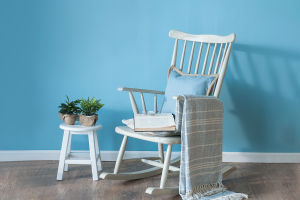Decorating your home can be an exciting yet overwhelming process. It’s your chance to personalize your space, add flair, and create an environment that reflects your personality.
A thoughtful approach ensures that your home becomes a cohesive, functional, and beautiful space.
1. Define Your Style and Theme
Before making any purchases or changes, it’s crucial to identify the style or theme you want to achieve. Whether you prefer a modern, minimalist vibe, a cozy, rustic feel, or something eclectic, defining your style will guide your choices throughout the process.
Tips:
Create a mood board or gather inspiration from Pinterest, magazines, or design websites.
Stick to one or two complementary themes to avoid a chaotic look.
Consider the overall vibe you want each room to evoke – serene, energetic, or sophisticated.
2. Set a Budget
Decorating can quickly become expensive if you’re not mindful of your spending. Before you begin, determine how much you’re willing to invest in the process. This will help you prioritize what’s most important and ensure that you stay on track.
Tips:
Decide what you’re willing to splurge on (e.g., a statement sofa) and where you can save (e.g., DIY decor).
Keep an eye out for sales or second-hand items that fit your theme.
Create a shopping list and stick to it to avoid impulsive buys.
HOME DECORATING TIPS || STYLING IDEAS || MY GO-TO DECORATING TIPS FOR A HIGH-END SPACE
Video by Jenna Pierce
3. Start with the Basics
Once you’ve defined your style and budget, it’s time to lay the foundation. The most important elements to consider at the beginning are walls, flooring, and large furniture pieces. These will set the tone for the rest of the decor.
Tips:
Choose neutral or muted colors for walls and floors if you plan to use bold accessories.
Invest in quality furniture pieces that are functional and timeless.
Consider the layout of your room and plan the placement of large items, such as sofas or beds, to ensure flow and functionality.
4. Embrace Lighting
Lighting plays a critical role in the atmosphere of your home. It can change the entire mood of a room and highlight key elements of your design.
Tips:
Layer your lighting by combining ambient, task, and accent lighting.
Use natural light as much as possible by keeping windows unobstructed or using sheer curtains.
Choose stylish lighting fixtures that complement your decor, like chandeliers or sleek lamps.
5. Personalize Your Space
Your home should be a reflection of who you are, so don’t be afraid to add personal touches. Whether it’s artwork, family photos, or quirky collectibles, adding elements that hold meaning to you can transform a house into a home.
Tips:
Display personal mementos or artwork that reflects your travels or hobbies.
Incorporate items that bring you joy or represent happy memories.
Rotate seasonal or holiday decor to keep your space fresh and inviting.
6. Be Mindful of Scale and Proportion
One of the most common mistakes people make when decorating is choosing furniture or decor items that don’t fit the scale of the room. Furniture that’s too large can make a space feel cramped, while decor that’s too small can get lost in a large room.
Tips:
Measure your space before buying large items like couches or dining tables.
Arrange furniture to allow for comfortable movement and flow within the room.
Use area rugs, artwork, or mirrors to balance out large spaces or tall ceilings.
7. Mix Textures and Patterns
Mixing textures and patterns is a great way to add depth and interest to your home decor. It helps avoid a flat or monotone look and can make your space feel more inviting and dynamic.
Tips:
Combine smooth and rough textures, such as a velvet sofa with a wooden coffee table.
Don’t be afraid to mix patterns, like striped cushions with floral curtains, as long as they share a common color palette.
Add cozy elements like throw blankets, cushions, and rugs to soften the look of your space.
8. Greenery and Natural Elements
Incorporating plants and natural elements into your decor brings life into your home and adds a calming, organic touch. Even a few small plants or natural materials can make a big difference in the atmosphere of a room.
Tips:
Choose low-maintenance indoor plants like succulents, snake plants, or ferns if you’re not a green thumb.
Add natural materials like wood, wicker, or stone for a warm, earthy feel.
Arrange plants at varying heights to create visual interest.
Decorating your home is an exciting journey of self-expression and creativity. By keeping these key points in mind—defining your style, planning your budget, mixing textures, and adding personal touches—you can transform any space into one that feels uniquely yours. After all, your home is your sanctuary, so make it a place you truly love to be in!


